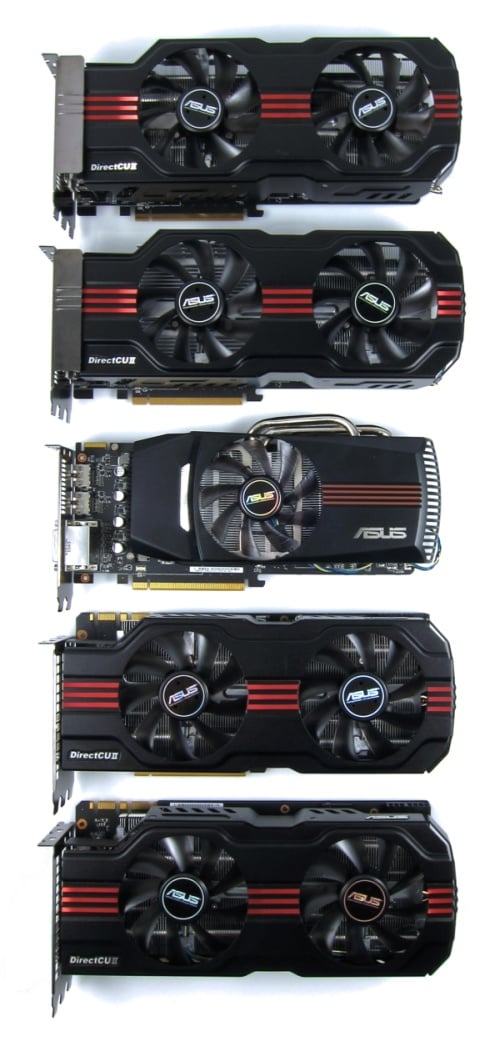Asus DirectCU NVIDIA and AMD Graphics Round-Up
Closer Look: DirectCU and Super Alloy Power
How are these cards different from reference designs?
Some might glance over these products and wonder what the hook is. Any time a new series of graphics cards are launched by AMD or NVIDIA, it is common for add in board (AIB) partners to tweak various features so that consumers have even more attractive options to choose from, beyond the original reference design. Well, each one of the cards here has taken the basic blueprint from the GPU makers a step further. In addition to higher GPU speeds, they also provide improved cooling solutions. The heatsinks have been redesigned to provide improved cooling in order to handle the increased frequencies that are set for their graphics engines, while also reducing noise output.
What exactly does DirectCU have to offer?
With the all new DirectCU II, Asus claims plenty of improvements over the reference designs of these particular graphics cards. Before we get to the results, let's spell out advantages the card maker wants you to be aware of. Asus claims to improve heat dissipation by providing up to 600% more airflow and superior overclocking with their Voltage Tweak utility. In addition, the cards feature dust proof fans, GPU Guard, Fuse Protection. And they all sport "Super Alloy Power technology" which promises a 15% performance boost, up to 35°C cooler operating temps, and 2.5x longer lifespan. With that said, let's take a closer look at exactly how they implement all of these features.
Direct contact heat sinks have taken over the aftermarket CPU cooling scene. It only makes sense for video card makers to implement the same feature on their products. The exposed heat pipe format has become popular because there is no additional thermal resistance between the heat generated by the GPU and the copper heat pipes that transfer it throughout the heat sink.
What does Super Alloy Power bring to the table?
In short, Super Alloy Power makes use of better components on the graphics card in order to increase performance. This is accomplished by reducing power loss, enhancing durability, and achieving cooler operation. SAP is implemented specifically in the chokes, capacitors, and MOSFETs found on every DirectCU product.

Their chokes consist a combination of unique alloy formula and a concrete core, eliminating the audible buzz sound heard from some video cards under load. Additionally, SAP capacitors allow for a 30% increase in maximum voltage, while lasting up to 2.5 time longer than the capacitors used in other graphics cards. The Super Alloy MOS also raises the voltage threshold, but is much smaller and operates cooler than generic MOSFETs. Also, a unique capacitor called SAP CAP is located back to back with the GPU in order to provide a cleaner power supply for more stable overclocking.
Yet another super feature we came across is called Super Hybrid Engine (SHE). It switches between high and low power profiles in real time, cranking up the power to the video card only when you need it.
The battle against dust rages on!
In addition to being larger than the fans you'll find on other graphics cards, ASUS DirectCU models feature dust proof fans. Asus says these fans are sealed twice over to prevent dust from entering the housing assembly and clogging up the bearings. The result is an increase in the life of the fans by up to 10,000 hours.









